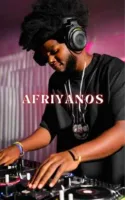Amapiano is one of the most popular homegrown music genres, with some of the biggest songs in South Africa. DJs like Kabza de Small, DJ Maphorisa, Uncle Waffles and many others have taken the sound internationally, where international demand for the genre keeps increasing. With its origins in kwaito, house, hip-hop, R&B and jazz, amapiano as a genre is a wide-ranging blend of different musical elements. Globally, there have already been international interpretations of Amapiano. Nigerian artists like Burna Boy and US artists like Chris Brown and Swae Lee have had their versions of amapiano songs on the music charts. Dancers in countries like the UK create dance challenges that use amapiano and distinctive South African styles of dancing to show multicultural similarities between other genres like reggaeton, dancehall, and afro beats. The beautiful aspect of these fusions is that none of them look or sound the same.
But within South Africa, because our country is so diverse, a culture that has taken an interest in remixing different genres is Afrikaans. Although we might not think Afrikaans and amapiano go together, there are already artists pushing the boundaries and producing songs that have Afrikaans vocals over an amapiano track. The term used to describe Afrikaans amapiano is called Afriyanos.
The term Afriyanos was created by DJ and producer Loobub in 2021. A popular Afriyanos artist called Meneer Cee has a debut song titled ‘Sies (Meisie Doen Jou Ding)’ that was released in 2020. Another popular Afrikaans artist is Jay Music, who explores both gqom and amapiano in his sound. Although the genre is relatively new, Afriyanos has already taken audiences by storm. An interesting angle to consider is that for coloured Afrikaans people, having an identity that is a cultural melting pot allows for the ability to fuse their identity into multiple genres.
There is also the question of whether this would be considered cultural appropriation (as discussed in this previous article). When people get exposed to something new, it creates exciting ways to engage with the country’s rich musical heritage. Personally, I think that when we are able to merge new ideas together in different ways, it creates the opportunity to imagine new possibilities for enjoyment – especially when it comes to music. Some of our favourite “traditional”/established music genres were born out of creative innovation and doing something that has never been done before. So, to be able to take a genre like amapiano that is uniquely South African and combine it with a language like Afrikaans that is also uniquely South African, we create even more possibilities to celebrate who we are, where we come from and where we are heading towards. That is the definition and essence of multiculturalism.
Question prompt: Have you heard of Afriyanos? Do you think we should mix genres like amapiano with other languages or keep them separate? What other South African music genres can you think of that might sound good together?
Have your say in our Annual Survey AND stand a chance to win awesome prizes – Click here to enter.



